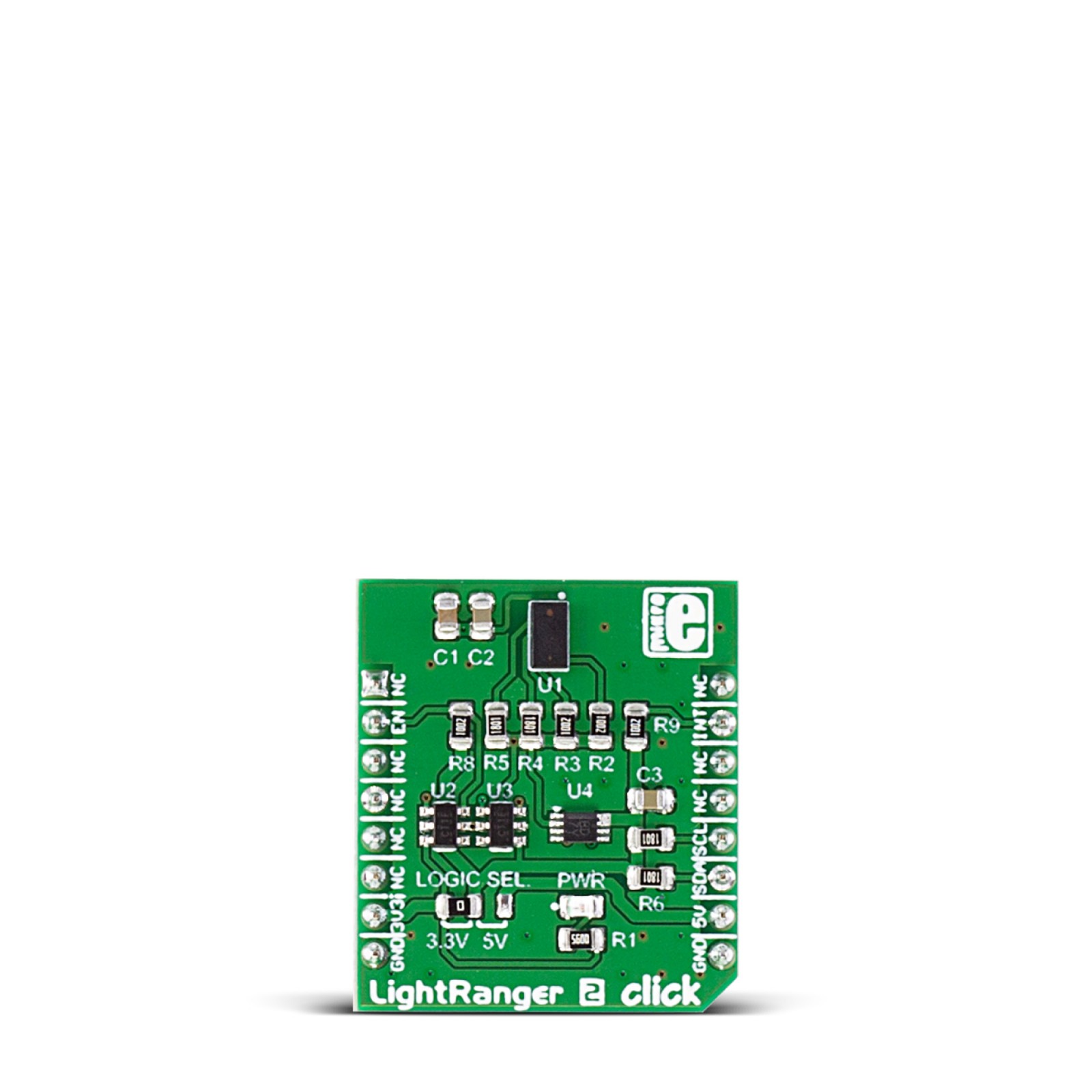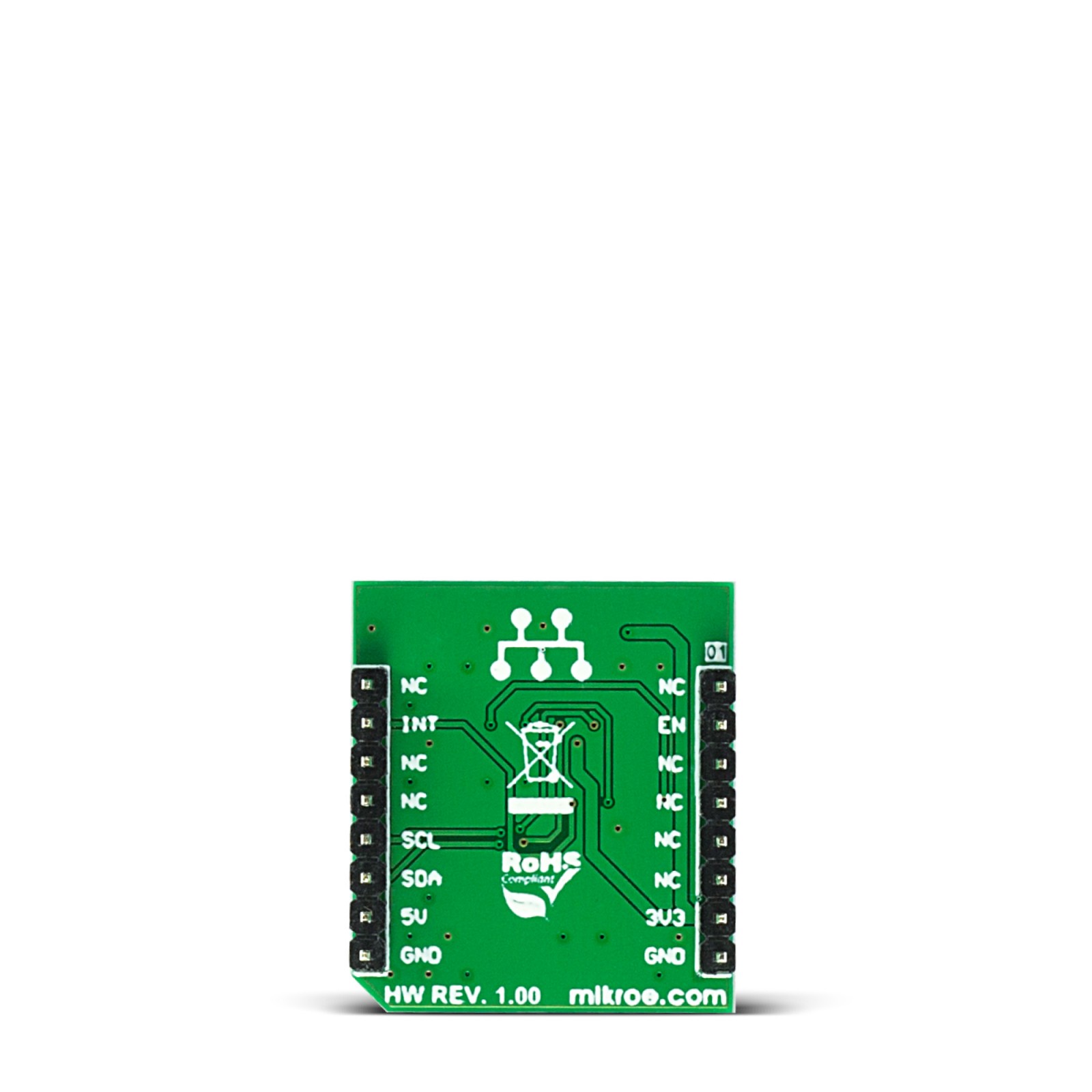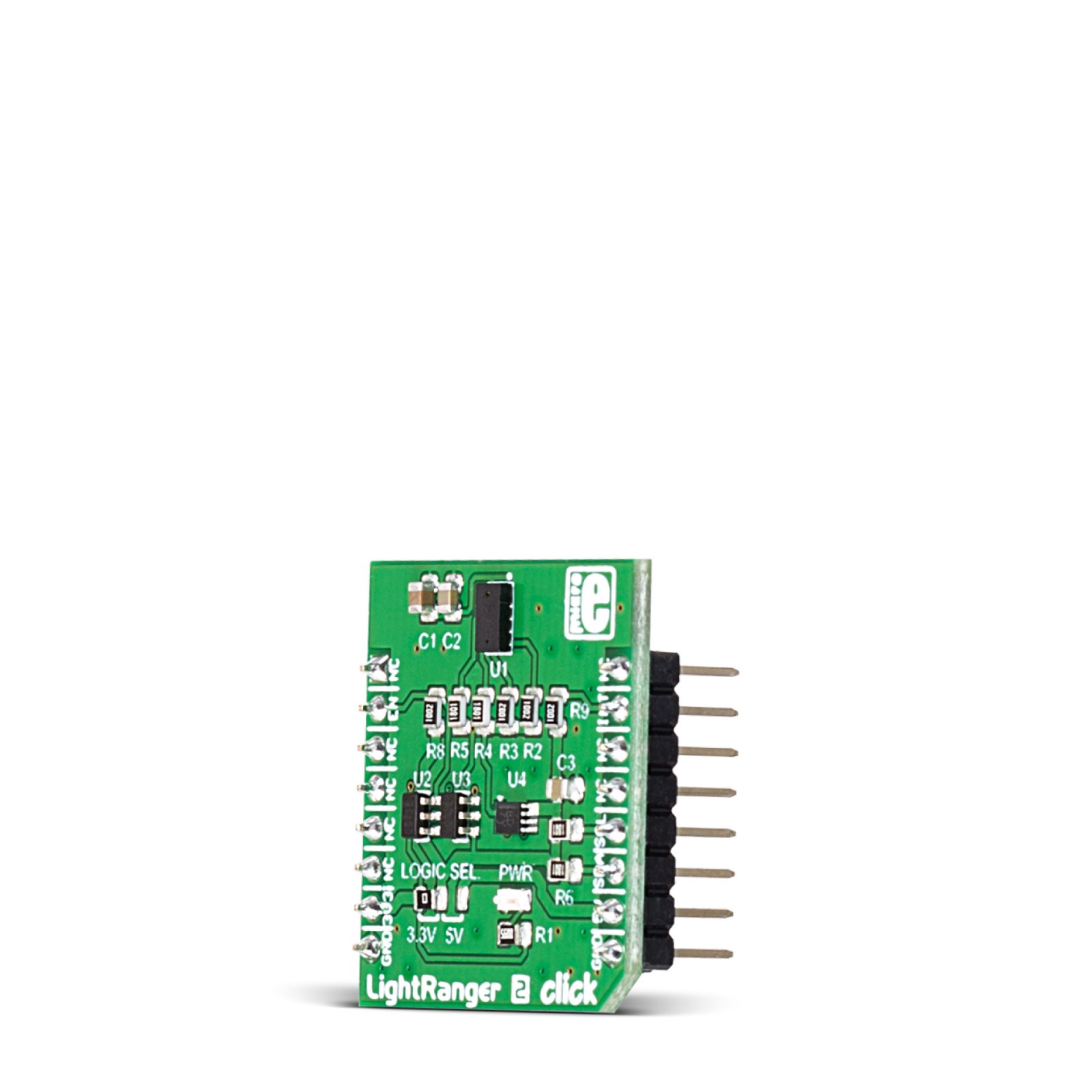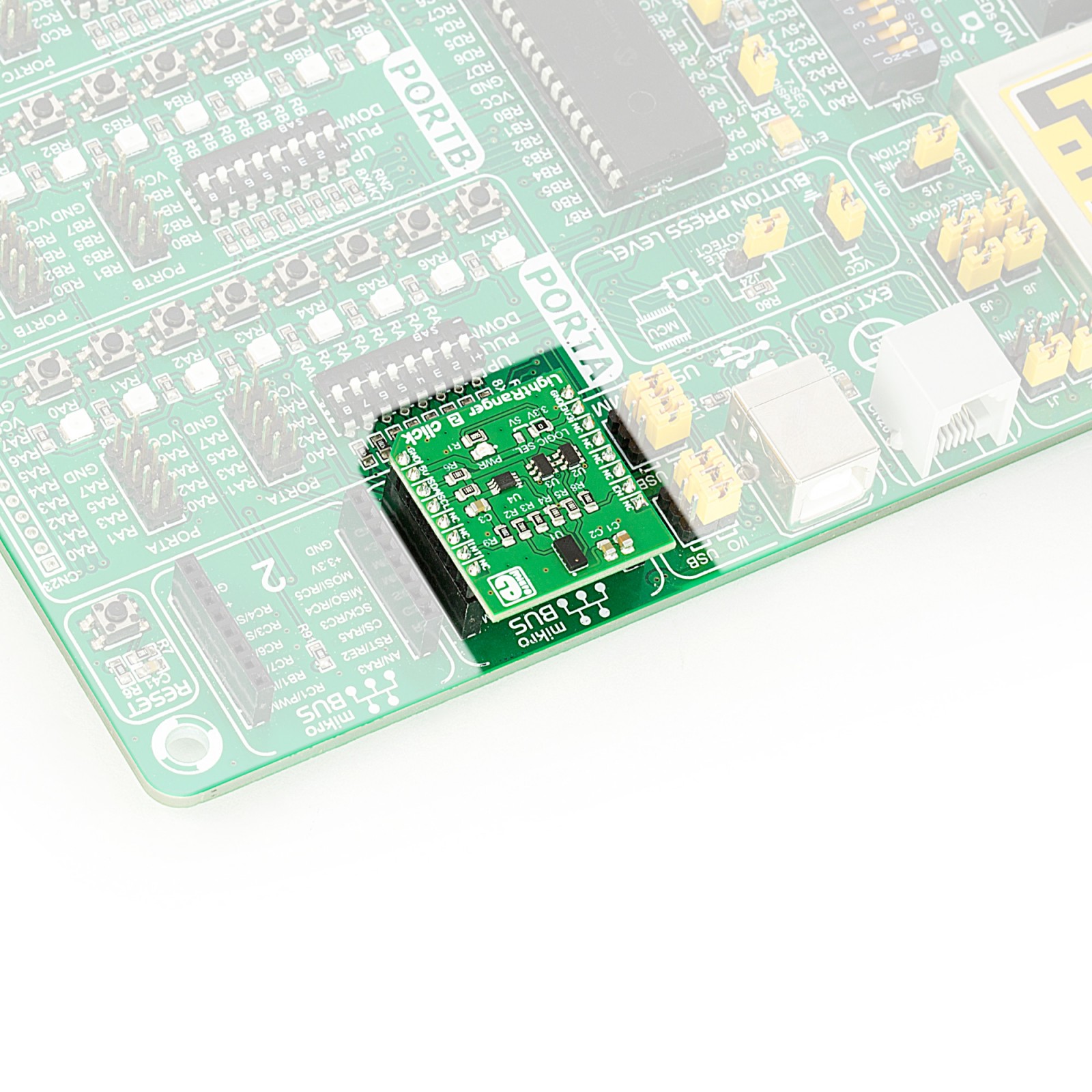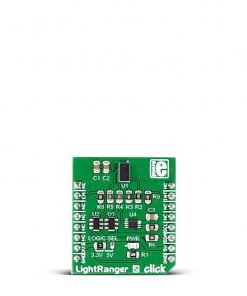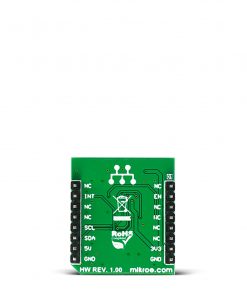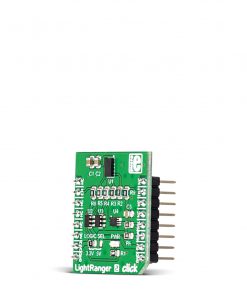LightRanger 2 Click
R535.00 ex. VAT
Lightranger 2 Click is a compact add-on board with a ranging sensor for distance-sensing applications. This board features the VL53L0X, the world’s smallest Time-of-Flight (ToF) ranging and gesture detection sensor from STMicroelectronics. This laser-ranging module provides accurate distance measurement, with absolute measurement distances up to 2m, whatever the target reflectances are. The sensor is a Class 1 laser device compliant and is eye-safe. This Click board™ makes the perfect solution for the development of applications for presence (object) detection, distance measurement, industrial ranging, inventory control, white goods, and many other applications.
Lightranger 2 Click is supported by a mikroSDK compliant library, which includes functions that simplify software development. This Click board™ comes as a fully tested product, ready to be used on a system equipped with the mikroBUS™ socket.
Stock: Lead-time applicable.
| 5+ | R508.25 |
| 10+ | R481.50 |
| 15+ | R454.75 |
| 20+ | R437.63 |

